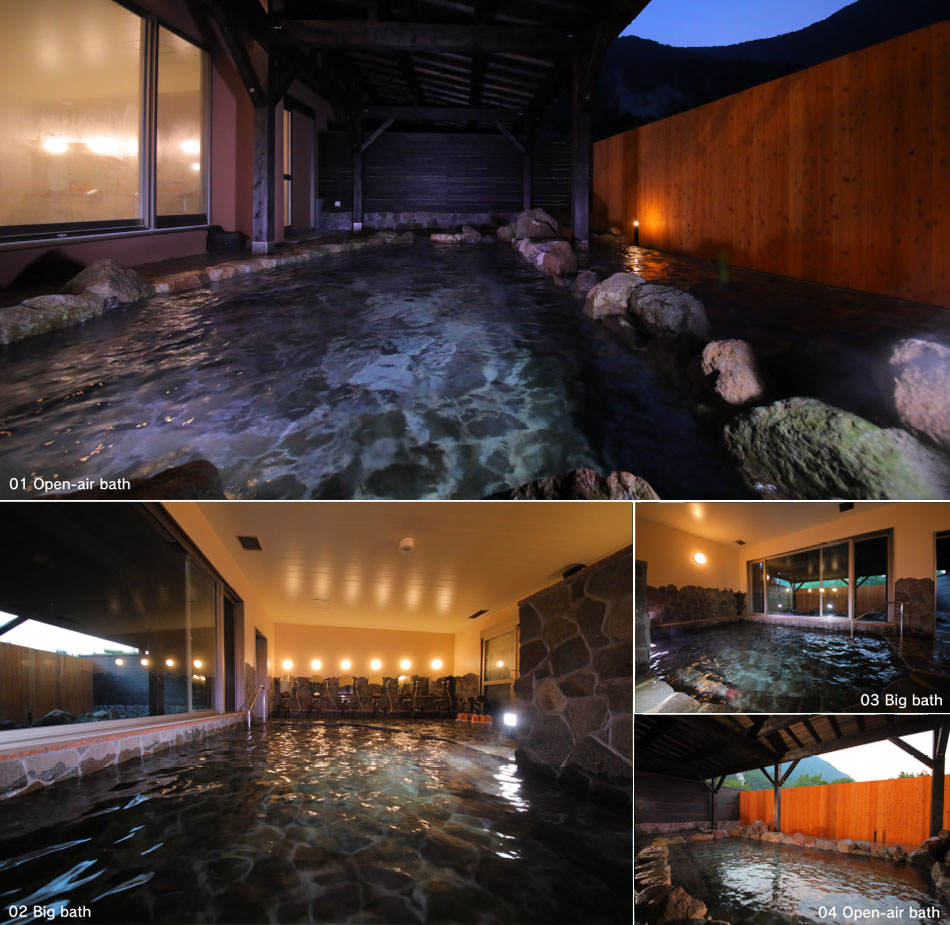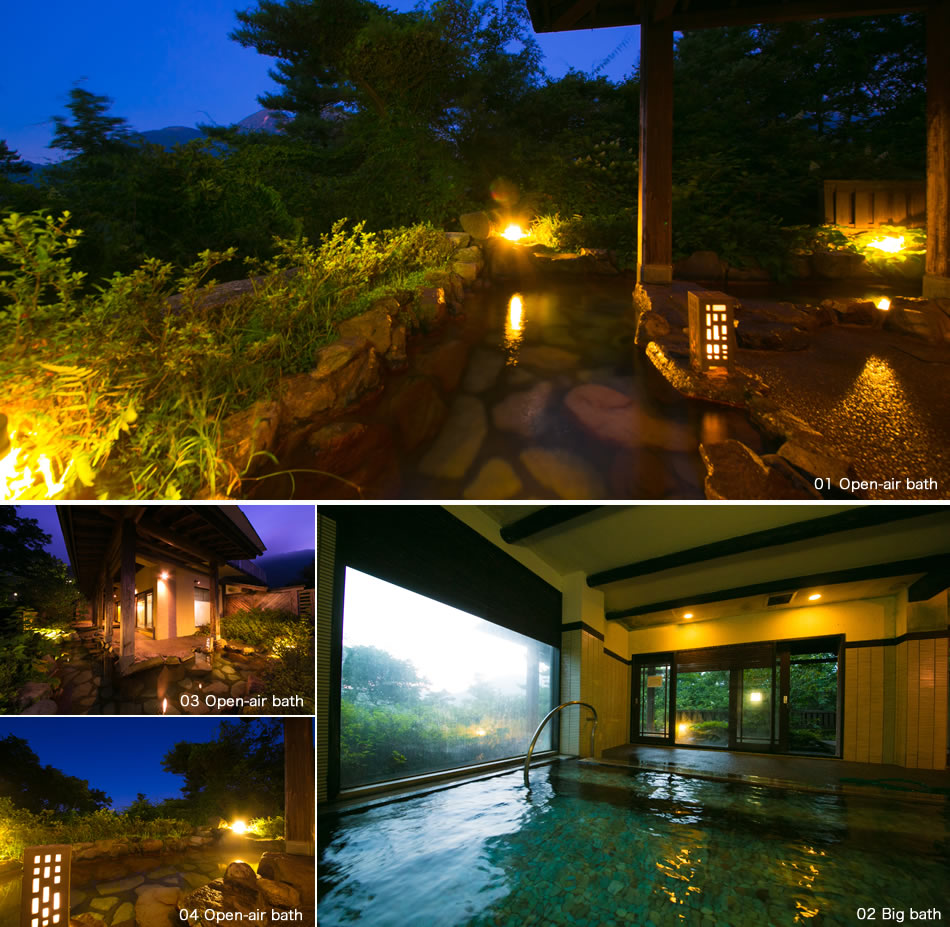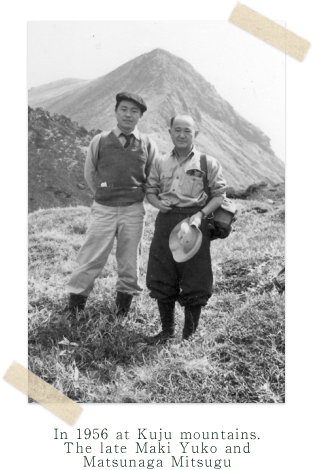Makinoto-no-yu
The open-air bath
Scent of sulfur with source draw hanging outdoor bath
"Makinoto-no-yu".
There is also a public bath.
Please enjoy plenty of hot water.

《 Guidance available 》
| location | -Sensui- First floor (Makunoto-no-yu) The bath is divided into areas for men and women |
|---|---|
| Area | Bath : indoor bath 20〜30 people, open pit 15〜20 people Washing place :10 shower |
| Usable times | From check-in to check-out |
《 Use of the bathing only 》
| Usage fee |
Adults ¥500 Children (4 〜 12 years old ) ¥400 |
|---|---|
| Usable times | 12:00〜20:00 |
・ The usable times may change depending on the circumstance.
・ Mountain climbing groups of over ten persons will be discounted.
Please makes enquiries for details. tel +81-973-79-2211




